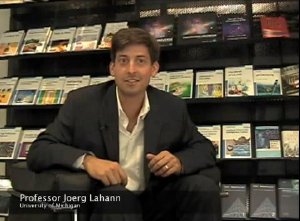Sep 17 2009
Functionalized nano- and microscale particle systems have become a key component in biomedical applications, from drug delivery to prosthetics. Their small size and potential for modification and functionalization make them ideal for performing specific tasks within the human body.

But can these materials be controlled at the structural level, to create particles capable of complex interactions with biological systems? Professor Joerg Lahann and his team at the University of Michigan believe that they can. They have developed a microscale fluid manipulation system—which they call electrohydrodynamic co-jetting—based on electrospinning, a process in which thin fibrous strands are drawn from a liquid using a high voltage.
In their latest work, reported in the materials science journal Advanced Materials, Professor Lahann and co-workers utilize this system to synthesize dual-compartment, biologically compatible polymer particles with the ability to selectively self-associate with human endothelial cells, found in the lining of blood vessels. When the particles were incubated with these cells, they displayed a strongly specific binding pattern—one hemisphere exhibited strong affinity to the cell surface, while the other had almost none. The explanation? One of the compartments had been modified with the protein streptavidin, which interacts strongly within biological systems. This selective functionalization resulted in spatial control at the cellular level; as only one side of each particle was attracted to the cells, they formed into layers, just one particle thick, on the cell surface.
With the fundamental concept demonstrated, the Lahann group identifies future work in more sophisticated multi-compartmented building blocks, suitable for use in more complex bio-hybrid designs. More fine control over the particle architecture, which will allow for the creation of different particle morphologies and functionalities, will be key to the design of novel, complex systems for use in areas such as regenerative medicine, medical imaging and diagnostics, and microscale energy production and storage.
More information: M. Yoshida et al., Adv. Mater. 2009, DOI: 10.1002/adma.200901971
Joerg Lahann interview: Multi-compartment functional nanoparticles